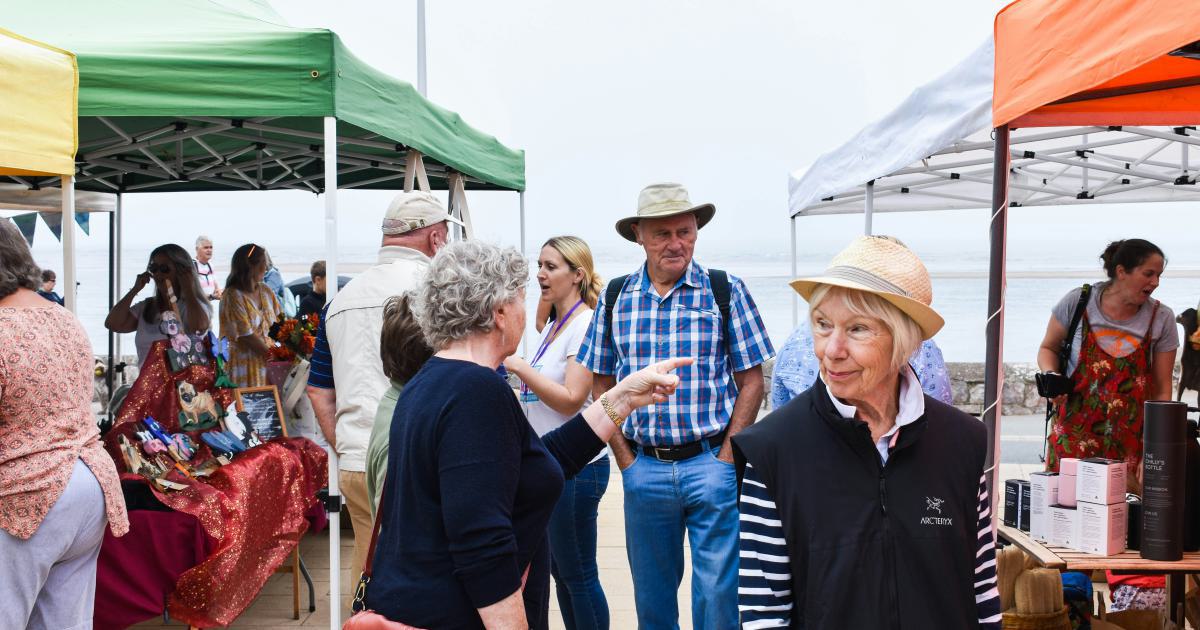How to Boost Foot Traffic with Hyperlocal Content for Beginners


Introduction to Hyperlocal Content
In the digital age, businesses of all sizes are constantly seeking new ways to attract and engage with their local customer base. One increasingly effective strategy is the use of hyperlocal content - information that is highly targeted and relevant to a specific geographic area or community. By creating and distributing this type of content, businesses can not only boost their online visibility but also drive more foot traffic to their physical locations.

Hyperlocal content covers a wide range of topics, from neighborhood events and community news to local product highlights and behind-the-scenes looks at your business. The key is to create content that speaks directly to the interests and needs of your immediate target audience - the people who live, work, and shop in the same area as your business.
The Benefits of Hyperlocal Content
Investing in hyperlocal content can provide numerous benefits for businesses of all sizes, including:
Increased Local Visibility: By creating content focused on your immediate geographic area, you can improve your search engine rankings for local queries and make it easier for nearby customers to find your business online.
Stronger Community Connections: Sharing hyperlocal content helps you build relationships with your local customer base, demonstrating your investment in the community and your understanding of their unique needs and interests.
Competitive Advantage: Many businesses struggle to effectively leverage hyperlocal marketing strategies, so taking the time to create high-quality, targeted content can give you a significant edge over your competitors.
Improved Customer Loyalty: When customers feel that a business truly understands and caters to their local community, they are more likely to become loyal, repeat patrons.
Increased Foot Traffic: By driving more online engagement and brand awareness through hyperlocal content, you can ultimately convert that interest into increased foot traffic and sales at your physical location.
Understanding Your Local Audience
The key to successful hyperlocal content is to deeply understand your target audience within your immediate geographic area. This means researching and analyzing factors such as:
- Demographic Data: Age, income, education level, household size, and other relevant characteristics of your local customer base.
- Psychographic Insights: Interests, values, behaviors, and pain points of your local audience.
- Local Events and Attractions: Upcoming community events, local landmarks, and other points of interest that are relevant to your customers.
- Competitive Landscape: Identifying the strengths and weaknesses of your local competitors, and how you can differentiate your business.
By taking the time to gather and analyze this data, you can create hyperlocal content that truly resonates with your target audience and helps you stand out in your local market.

Developing a Hyperlocal Content Strategy
Once you have a solid understanding of your local audience, you can begin to develop a comprehensive hyperlocal content strategy. This process involves several key steps:
1. Define Your Hyperlocal Content Goals
Start by clearly defining what you hope to achieve with your hyperlocal content efforts. Common goals may include:
- Increasing local brand awareness and visibility
- Driving more foot traffic to your physical location
- Fostering stronger connections with your local community
- Generating more leads and sales from nearby customers
- Differentiating your business from local competitors
Establishing these goals will help you align your content creation and distribution efforts to maximize their impact.
2. Identify Relevant Topics and Themes
Based on your audience research, identify the topics, themes, and types of content that will be most relevant and engaging for your local customers. This could include:
- Upcoming community events, festivals, or activities
- Profiles of local business owners, community leaders, or influencers
- Spotlights on unique local products, services, or experiences
- Behind-the-scenes looks at your business and its involvement in the community
- Local news, trends, and issues that are important to your audience
The key is to find the sweet spot between what your audience is interested in and what your business can authentically contribute.

3. Create a Content Calendar
Develop a content calendar that outlines your planned hyperlocal content pieces, including:
- Specific topics and themes
- Target publication dates
- Distribution channels (e.g., website, social media, email newsletter)
- Responsible team members or contributors
Having a well-organized content calendar will help ensure a steady flow of relevant, high-quality hyperlocal content that keeps your audience engaged.
4. Leverage Diverse Content Formats
While written blog posts and articles are a core component of hyperlocal content, consider expanding your repertoire to include other engaging formats, such as:
- Video walkthroughs or interviews
- Local event coverage and photo galleries
- Infographics highlighting local data or trends
- Audio podcasts featuring community voices
- Interactive polls or surveys on local issues
Diversifying your content formats can help you reach a wider audience and keep your hyperlocal content fresh and interesting.

5. Optimize for Search and Discoverability
To ensure your hyperlocal content is readily found by your target audience, implement strong search engine optimization (SEO) practices, such as:
- Incorporating relevant local keywords (e.g., "downtown [city name]", "[neighborhood name] events")
- Optimizing page titles, meta descriptions, and image alt text for local searches
- Claiming and optimizing your business listings on Google, Bing, and other local directories
- Leveraging location-based social media hashtags and geotargeting
By making your hyperlocal content easy to discover, you can drive more traffic to your website and physical location.
6. Promote and Distribute Strategically
In addition to publishing your hyperlocal content on your own channels (e.g., website, blog, social media), explore opportunities to extend its reach through other local platforms, such as:
- Partnering with local media outlets or influencers to cross-promote content
- Submitting content to local community websites, event calendars, or directories
- Sharing updates and highlights with local business associations or community groups
- Leveraging email newsletters, flyers, or other offline channels to reach nearby customers
Diversifying your distribution channels can help you maximize the impact of your hyperlocal content efforts.

Measuring and Refining Your Hyperlocal Content
As with any marketing strategy, it's crucial to continuously measure the performance of your hyperlocal content and make adjustments as needed. Some key metrics to track include:
- Website traffic and engagement (e.g., time on page, bounce rate) from local users
- Social media engagement (likes, shares, comments) on hyperlocal content
- Lead generation and conversions from local customers
- Foot traffic and sales at your physical location
Analyze these metrics to identify which types of hyperlocal content are resonating most with your local audience, and use those insights to refine your strategy and create even more effective content in the future.

Best Practices for Hyperlocal Content Success
To ensure your hyperlocal content efforts are as successful as possible, keep the following best practices in mind:
Maintain Authenticity: Your hyperlocal content should reflect a genuine understanding and appreciation for your local community. Avoid generic or inauthentic content that comes across as insincere.
Collaborate with Local Partners: Seek out opportunities to partner with other local businesses, community organizations, or influencers to co-create or cross-promote hyperlocal content.
Encourage User-Generated Content: Invite your local customers to share their own stories, photos, or experiences related to your business and community. This can help build a sense of shared ownership and engagement.
Be Responsive and Engaged: Monitor your hyperlocal content for comments, questions, and feedback, and make a concerted effort to respond and engage with your local audience.
Stay Agile and Adaptable: Continuously monitor the performance of your hyperlocal content and be willing to adjust your strategy as needed to better meet the evolving needs and interests of your local customer base.
By following these best practices, you can create a highly effective hyperlocal content strategy that drives increased foot traffic, stronger community connections, and sustainable business growth.

Conclusion
In today's competitive business landscape, leveraging hyperlocal content can be a powerful way to attract and engage with your local customer base. By creating content that is highly relevant, authentic, and tailored to the specific needs and interests of your immediate geographic area, you can boost your online visibility, foster stronger community connections, and ultimately drive more foot traffic to your physical location.
Remember, the key to successful hyperlocal content is to deeply understand your local audience, develop a well-rounded strategy, and continuously measure and refine your approach. With the right mindset and execution, your hyperlocal content efforts can become a crucial driver of business growth and long-term success.